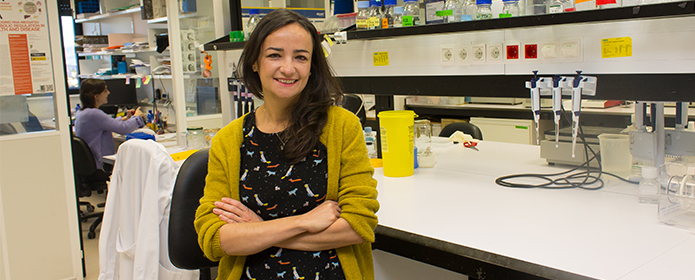Scientists discover an enhancer gene for a type of lung cancer
Researchers at Cima Universidad Navarra (Spain) find this new mechanism by which some tumour cells are more aggressive

Researchers at Cima Universidad de Navarra have discovered a gene that enhances cell proliferation in lung squamous carcinoma (LSC), one of the most common types of lung tumour worldwide. The study demonstrates that this gene, which they named SWINGN, is expressed in some tumour cells, and its action causes these cells to become more aggressive. This research is published in the scientific journal Nature Communications.
Scientists have relied on the study of long non-coding RNA (lncRNA), molecules involved in genome regulation and gene expression. Specifically, they investigated the binding of this type of RNA molecules to the protein SMARCB1 (which alteration is associated wit tumours appearance). ‘We observed this relationship and discovered SWINGN, a lncRNA that is associated with SMARCB1 exclusively under conditions of cell proliferation, exercising a pro-oncogenic role in some tumours,’ said Maite Huarte, a researcher from the group of long non-coding RNAs and regulation of the cancer genome at Cima, who is also responsible for this work.
In the study researchers analyse the mechanism by which SWINGN promotes oncogenesis. They observed that the new gene induces the activation of GAS6, an important oncogene overexpressed in many cancers. ‘We confirmed this observation in the laboratory by analysing several tumour samples from patients. We detected a positive correlation between the expression of SWINGN and GAS6, mainly in squamous lung carcinoma but also obtained similar results in invasive breast carcinoma. At the same time, there was no correlation in colon adenocarcinoma,’ explained Elena Grossi, a researcher from Dr Huarte's group and first author of the article. In turn, the researcher added, ‘SWINGN activates not only GAS6 expression but also the expression of a group of genes that together promote the greater proliferation of tumour cells.’
This study presents SWINGN as a new therapeutic target against cancer. As Dr Huarte explained: ‘It could represent a type of mechanism also used by other genes that cause various cancers. In addition to advancing in this research, the next step is to find a drug capable of inhibiting this gene. Hence, cancer cells will lose their tumour forming capacity.’
-
Bibliographical reference:
Nature Communications (2020): A lncRNA-SWI/SNF complex crosstalk controls transcriptional activation at specific promoter regions.
